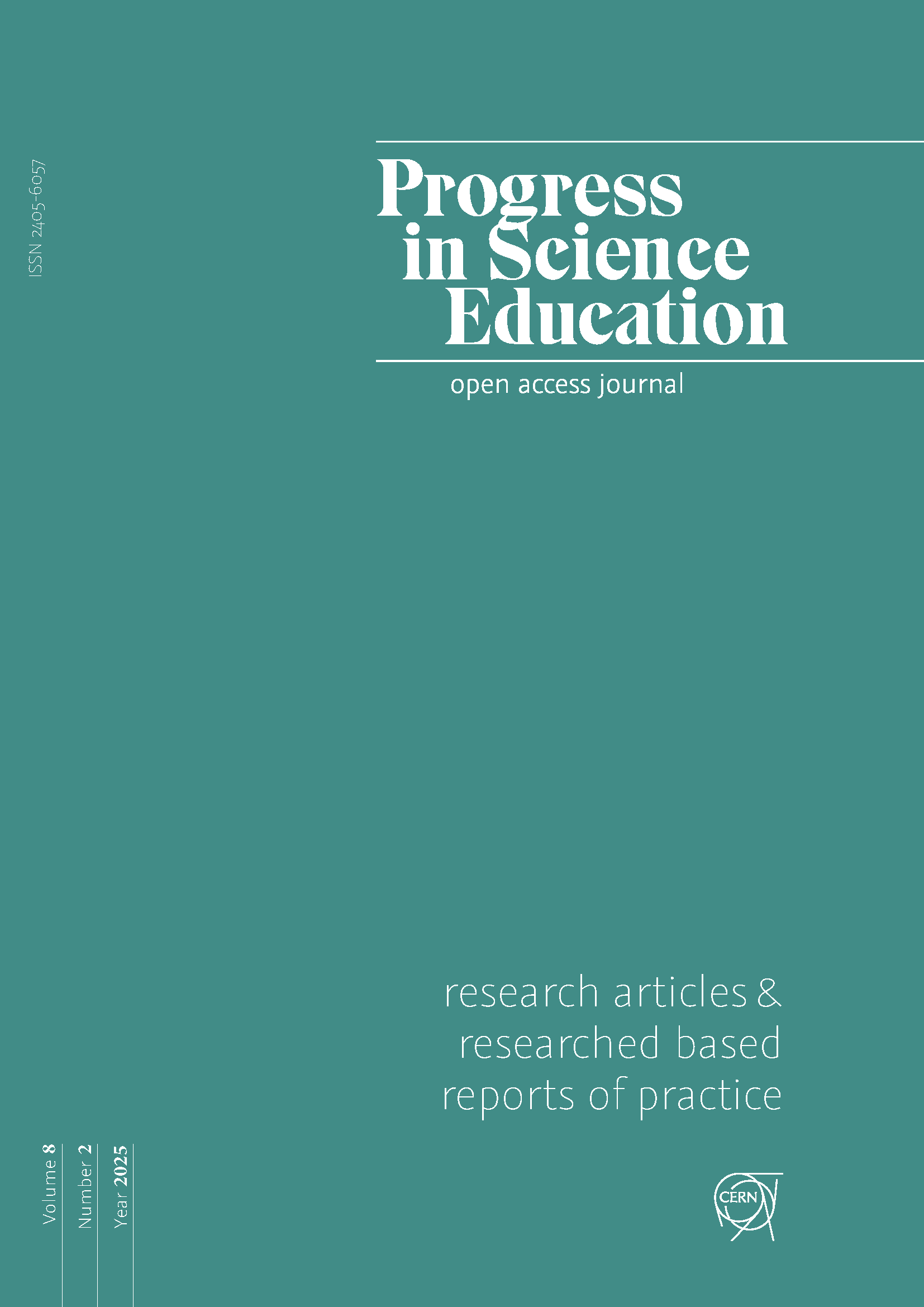Digitale Werkzeuge im Natur- und Technikunterricht
Ein Projekt mit Studierenden der Sekundarstufe 1
DOI:
https://doi.org/10.25321/prise.2025.1503Abstract
Hintergrund: Die Integration von Informatik in den NT-Unterricht spielt heute noch keine grosse Rolle in der Ausbildung von Lehrpersonen. Es mangelt an Vorbildern und Selbstvertrauen bei den angehenden Lehrpersonen.
Zweck: Die Absicht des Projekts DIWENT war es, dass Studierende mit der Unterstützung von den Kursleitenden, selbständig eine Unterrichtssequenz erarbeiten können, und diese auf der Zielstufe anwenden. Es wird erwartet, dass die zukünftigen Lehrpersonen durch das exemplarische Umsetzen auch langfristig digitale Werkzeuge im NT-Unterricht erproben und einsetzen werden.
Stichprobe/Setting: Der Beitrag fusst auf Erfahrungen der beiden Dozierenden zum Einsatz von Sensoren und Mikrocomputern in einer Kurswoche und auf Beobachtungen in der Begleitung von vier Teilnehmenden in der Umsetzungsphase.
Design und Methode: Im Sinne der designbasierten Forschung werden das Seminar und die Umsetzungsprojekte der beteiligten Studierenden beschrieben und es wird über ausgewählte Beobachtungen im Prozess berichtet.
Ergebnisse: Die individuellen Projekte der Teilnehmenden lassen sich grundsätzlich als gelungen betrachten. Dabei sind sie eher komplexer ausgefallen als für die Unterrichtspraxis sinnvoll. Es hat sich zudem gezeigt, dass die individuellen Voraussetzungen der Teilnehmenden die Begleitung durch die Kursleitung anspruchsvoll macht, sowohl im didaktischen wie auch im fachlichen Bereich.
Folgerungen: Durch vermehrte Vorgaben lässt sich verhindern, dass die Teilnehmenden sich selbst und die technischen Möglichkeiten überfordern. Unser Ansatz bietet wertvolle Anregungen für eine Aufnahme von angewandten Informatikkenntnissen in das reguläre NT-Ausbildungscurriculum an pädagogischen Hochschulen.
Schlüsselbegriffe: Computer programmieren, Naturwissenschaftsdidaktik, Messverfahren, Sensoren, Ausbildung Lehrer:innen
Digital tools in science and technology lessons – a project with pre-service teachers for lower secondary school
Background: The integration of computer science in science classes does not yet play a major role in the training of teachers. There is a lack of role models and self-confidence among prospective teachers.
Purpose: The aim of the DIWENT project was for pre-service teachers to develop a lesson sequence independently with the support of the course leaders and to apply it at the target level. It is expected that by implementing examples, the future teachers will also try out and use digital tools in science lessons in the long term.
Sample/setting: The article is based on the experiences of the two lecturers in the use of sensors and microcomputers in a one-week course and on observations made while supporting four participants in the implementation phase.
Design and method: In the sense of design-based research the seminar and the implementation projects of the participating pre-service teachers are described and selected observations in the process are reported.
Results: The individual projects of the participants can be considered a success in principle. The projects turned out to be more complex than is useful for classroom practice. It also became apparent that the individual prerequisites of the participants made it challenging for the course management to provide support in both didactic and technical areas.
Conclusions: By providing more guidelines, we were able to prevent the participants from overwhelming themselves and the technical possibilities. Our approach offers valuable suggestions for incorporating applied computer science knowledge into the regular science and technology training curriculum at teacher education universities.
Keywords: computer programming, science pedagogical practices, science measurement methods, sensors, teacher training
Downloads
Published
Issue
Section
License
Copyright (c) 2025 The Author/s

This work is licensed under a Creative Commons Attribution-NonCommercial-ShareAlike 4.0 International License.
Authors who publish with this journal agree to the following terms:
- Authors retain copyright and grant the journal right of first publication with the work simultaneously licensed under a Creative Commons Attribution License that allows others to share the work with an acknowledgement of the work's authorship and initial publication in this journal. The applicable licence is https://creativecommons.org/licenses/by-nc-sa/4.0/, which means
You are free to:
Share — copy and redistribute the material in any medium or format
Adapt — remix, transform, and build upon the material under the following terms:
Attribution: You must give appropriate credit, provide a link to the license, and indicate if changes were made. You may do so in any reasonable manner, but not in any way that suggests the licensor endorses you or your use.
NonCommercial: You may not use the material for commercial purposes.
ShareAlike: If you remix, transform, or build upon the material, you must distribute your contributions under the same license as the original.
Authors are able to enter into separate, additional contractual arrangements for the non-exclusive distribution of the journal's published version of the work (e.g., post it to an institutional repository or publish it in a book), with an acknowledgement of its initial publication in this journal.
Authors are permitted and encouraged to post their work online (e.g., in institutional repositories or on their website) prior to and during the submission process, as it can lead to productive exchanges, as well as earlier and greater citation of published work (see The Effect of Open Access).

